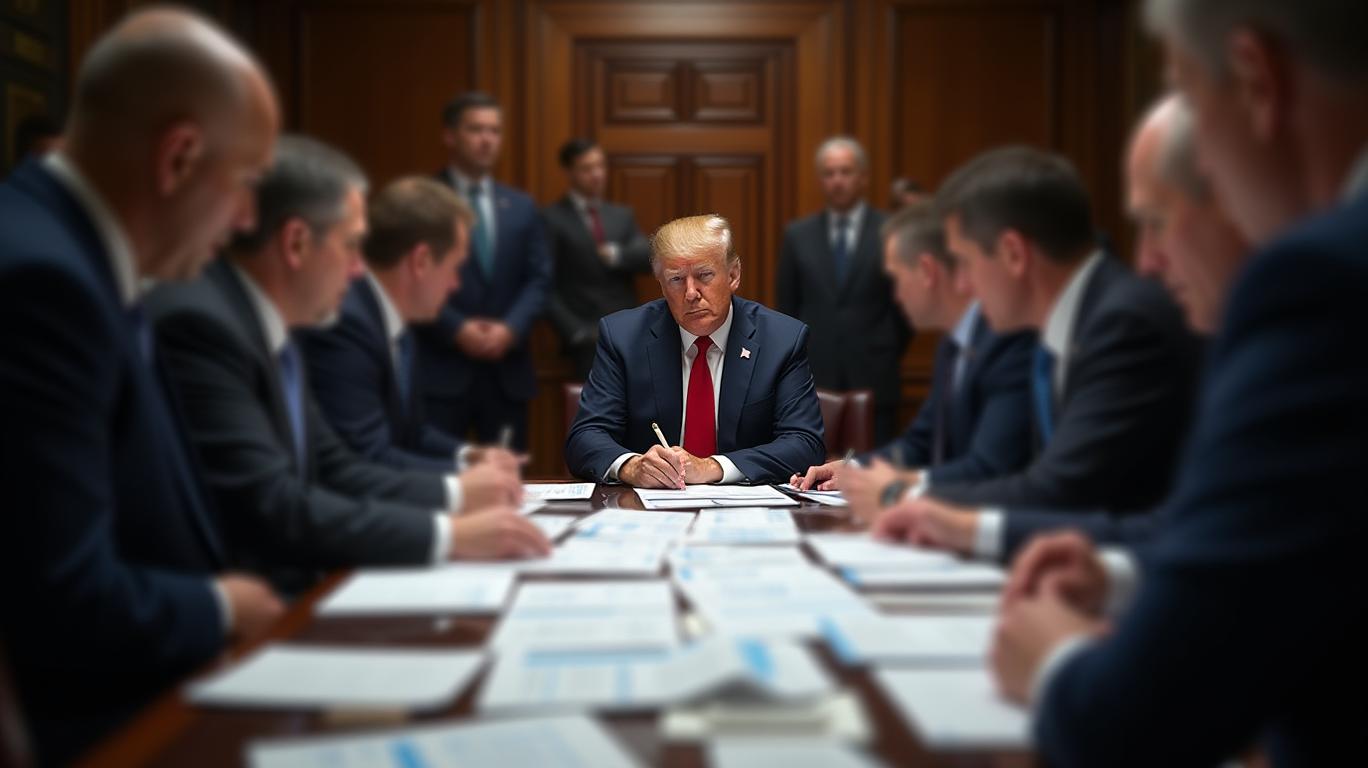U.S. Tariff Revenue Soars to $17.4 Billion in April, Nearly Double March's Total
Saturday, May 3, 2025 9:04 pm ET
U.S. Tariff Revenue Soars to $17.4 Billion in April, Nearly Double March's Total
The U.S. Treasury reported that tariff revenue surged to $17.4 billion in April, marking a significant increase from March's total. This sharp rise underscores the ongoing impact of tariff policies on the U.S. economy [2].According to the U.S. Treasury, the April revenue figure represents a nearly 90% increase compared to March's total. This growth is primarily attributed to the implementation of tariffs on various goods, including steel, aluminum, and a wide range of Chinese imports. The tariff revenue collected in April is part of a broader trend of increased tariff revenues over the past year, reflecting the ongoing trade disputes and policy volatility [2].
The increase in tariff revenue has significant implications for both businesses and consumers. For businesses, the higher tariffs have led to increased costs, which can be passed on to consumers in the form of higher prices. This has contributed to a general rise in inflation, as seen in recent economic data. For consumers, the higher prices due to tariffs can erode purchasing power and impact overall economic growth [4].
The U.S. government has been actively engaged in trade negotiations and policy adjustments to mitigate the impact of tariffs. However, the ongoing uncertainty and volatility in trade policies have created challenges for businesses in terms of planning and investment. The recent increase in tariff revenue underscores the need for a more stable and predictable trade environment [4].
Despite the challenges posed by tariffs, the U.S. economy has shown resilience. The strong economic performance in recent quarters, driven by factors such as consumer spending and business investment, has helped to offset some of the negative impacts of tariffs. However, the long-term effects of tariffs on economic growth and trade relationships remain a key area of concern for policymakers and economists alike [4].
In conclusion, the surge in U.S. tariff revenue to $17.4 billion in April highlights the significant impact of tariff policies on the economy. While the revenue increase reflects the ongoing trade disputes and policy volatility, it also underscores the need for a more stable and predictable trade environment. As the U.S. continues to navigate the complex landscape of global trade, the long-term effects of tariffs on economic growth and trade relationships will remain a critical area of focus.
References:
[1] https://www.businessinsider.com/amazon-billion-hit-customer-returns-tariffs-2025-5
[2] https://fortune.com/2025/05/02/tariffs-revenue-treasury/
[3] https://www.gurufocus.com/news/2811892/neovolta-neov-projects-april-revenue-to-surpass-2-million-neov-stock-news
[4] https://economictimes.indiatimes.com/tech/technology/trumps-tariffs-have-launched-global-trade-wars-heres-a-timeline-of-events/articleshow/120771726.cms?from=mdr










So who is paying the tariffs? Maybe I have this all wrong, but it is US companies and US consumers. Not China and not other countries. So it is a tax collection from US citizens?